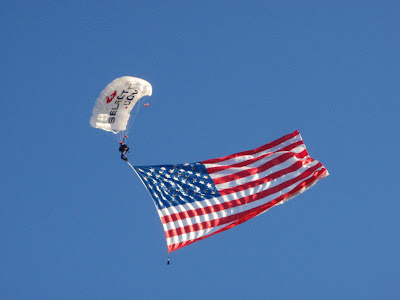 |
| From Final_Misc |
After fits and starts, Indian Summer is finally giving way to Autumn for true. Trees and shrubs along our route have burst into a brilliant red and orange flame of color before literally going bare overnight in a shower-storm of leaves. The rest of nature is faithfully following suit: reptilian creatures metabolically slowing down and slithering into hibernation holes; warm-blooded migratory birds heading for Gulf Coast marshes and Central American wildlands; and, like the “V”-flights of geese honkily winging their way towards more seasonable climes, we’re seeing flocks of human RVers abandoning their northerly summer habitats and beating a hasty retreat down to Florida, South Texas, and Arizona. The state parks have been suddenly and rapidly depopulated as if by some instinctive genetic signal that winter is imminent. Campers have packed up the strings of lights, banners, bird feeders, and grills. They've folded pullout modules back into the RV and securely stowed canopies, screened cabanas, and bikes. Where once we might have been cheek by jowl with a host of frontcountry campers, we now have our pick of overnight sites in an otherwise empty campground estate. But, sadly, we too are heeding the seasonal clock as we head down the e-Tour's final stretch and contemplate a return to our South Louisiana home.
However, before returning the Subaru and Coleman camper to Boulder, CO where we started our odyssey, there was one last stopover that we wanted to make. Accordingly, we planned our route back to our Boulder barn so that we could pass through Wichita, KS, home of the Coleman Company. Coleman is the primary sponsor of our e-Tour, and it was great to have an opportunity to make a final e-Tour presentation to folks at the corporate HQ. We reviewed the e-Tour mission and the itinerary of our four-month sojourn, and demonstrated some of the teaching-learning activities and techniques that we've used to reach our widely varied audiences. At the presentation conclusion, a gent from corporate communications approached us with an epiphany of sorts... this e-Tour sponsorship and Coleman's commitment to promoting outdoor ethics and stewardship is a significant source of pride for Coleman employees. He expressed a desire to make the story of the e-Tour and Coleman's ongoing relationship with the Leave No Trace Center for Outdoor Ethics part of every Coleman employee's orientation and training. Well, we couldn't agree more... it is a great story, and e-Tour is a fitting and right-minded sponsorship for the Coleman Company.
The conversation reminded us of a quote that we recently came across: "We know that we all have knowledge. Knowledge puffs up, but love edifies. And, if anyone thinks that he knows anything, he knows nothing yet as he ought to know." Reflecting on this, we can hope that the 2010 e-Tour has helped folks frame some of the questions about personal choices, find common ground for dialogue and constructive action, and have a better understanding for the necessity of a sustainable conservation ethic. We can also hope that our shared love for the outdoors is mutually beneficial, sustaining both the environment and ourselves. It's the ongoing, generous support of Coleman and other Leave No Trace sponsors and partners that enables the e-Tour to shed a little (lantern) light on how we can all, regardless of age or experience, enjoy the outdoors in a responsible, sustainable, and yes, loving way.
 |
| From Final_Misc |
Hoping that this is but the prelude, and that we will meet you yet down the migratory road, perhaps in another clime and another season, always seeking to Leave No Trace as the story continues...
Thanks go especially to Coleman's Nicole Freund, who has been and continues to be a dedicated champion for the e-Tour and Leave No Trace. And, of course, incalculable thanks go to the extraordinary folks at the Leave No Trace Center for Outdoor Ethics for their dedication and support.
 |
| From Final_Misc |
Peggy and Barrett
2010 Leave No Trace e-Tour
Sponsored by Coleman
e-Word: end-of-the-beginning































